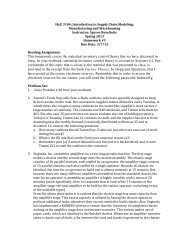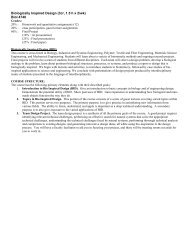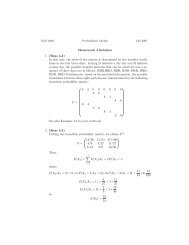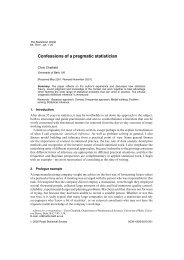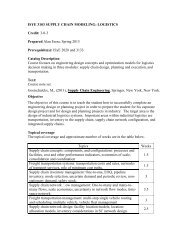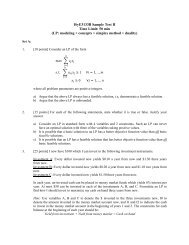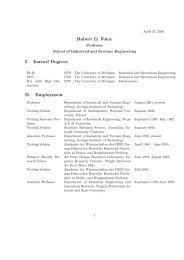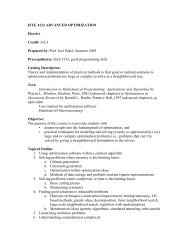Rhs sensitivity analysis example
Rhs sensitivity analysis example
Rhs sensitivity analysis example
Create successful ePaper yourself
Turn your PDF publications into a flip-book with our unique Google optimized e-Paper software.
Note that we can write the dual problem (since the optimal value is the maximum of the objective<br />
values of the extreme points) as:<br />
z = max { (6+∆)*(‐2) + 3*(0); (6+∆)*(‐1)+3*(‐1)} = max {‐12 ‐ 2∆; ‐9‐∆}<br />
Note that primal and dual problem have the same objective value.<br />
The objective z(∆) as a function of ∆ is:<br />
z(∆)<br />
∆<br />
1. Non‐increasing : Since increasing rhs enlarges the feasible region<br />
of the primal problem and objective cannot get worse<br />
and we are minimizing<br />
2. Convex: The slopes are non‐decreasing (becomes less negative), since the marginal<br />
benefit of having an extra unit of component A can only stay the same or get<br />
worse as we have more and more of it.<br />
3. Piece‐wise linear: Since it is given as the maximum of a number of linear functions.<br />
What is the marginal value (also called shadow price) of the rhs of constraint 1? Currently ∆ = 0, the<br />
slope of z(∆) at ∆=0 is ‐1 which is precisely the current value of optimal dual solution of constraint 1.<br />
How long is this marginal value valid? As long as the current dual solution (y1=‐1,y2=‐1) remains optimal.<br />
Note that when ∆



